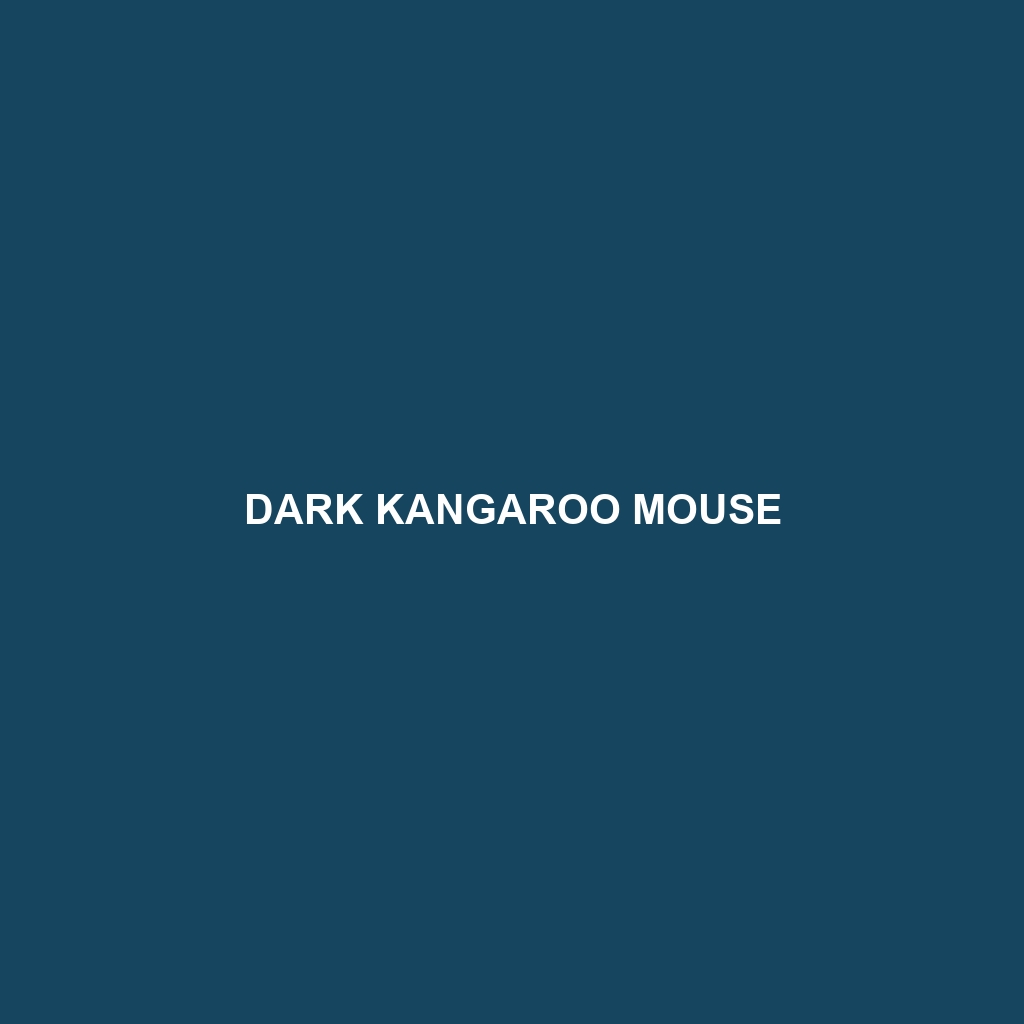Common Name: Dark Kangaroo Mouse
Scientific Name: Microdipodops megacephalus
Habitat:
The Dark Kangaroo Mouse is primarily found in the arid and semi-arid regions of the western United States, particularly in the Great Basin. Its preferred habitats include sagebrush ecosystems and sandy or gravelly deserts, where it can easily find shelter and food. The species thrives in environments that offer loose soil, which aids in digging burrows.
Physical Characteristics:
The Dark Kangaroo Mouse is a small rodent, reaching sizes of approximately 4 to 5 inches in body length, with a tail that is equally long or longer. It exhibits a soft, dense fur ranging in color from light brown to dark gray, with distinct light underbellies. Notable features include large eyes, adapted for nocturnal activity, and long hind legs that allow for impressive leaps, resembling the movements of kangaroos.
Behavior:
This species is primarily nocturnal, displaying a range of fascinating behaviors. Dark Kangaroo Mice are known for their agility and ability to cover significant distances while foraging. They utilize complex burrow systems for shelter, with distinct chambers for nesting and food storage. Their social structure is generally solitary, although they may share burrows during the breeding season.
Diet:
The diet of the Dark Kangaroo Mouse consists mainly of seeds, grains, insects, and plant matter. This herbivorous rodent has developed specific feeding habits, often hoarding food in its burrows to ensure survival during scarce periods. Seeds from various grasses and forbs are primary food sources, making them integral to their nutrient intake.
Reproduction:
The breeding habits of the Dark Kangaroo Mouse typically occur between late spring and early summer. Females can give birth to a litter of 2 to 5 offspring after a gestation period of about 25 to 30 days. Parental care is primarily provided by the female, who ensures the young are fed and protected until they are self-sufficient at around 3 to 4 weeks of age.
Conservation Status:
The Dark Kangaroo Mouse is currently listed as ‘vulnerable’ due to habitat loss and fragmentation, primarily driven by human activities and environmental changes. Conservation efforts are necessary to ensure the survival of this unique rodent.
Interesting Facts:
One fascinating aspect of the Dark Kangaroo Mouse is its remarkable ability to survive with minimal water intake, primarily deriving moisture from its food. Additionally, this species can leap as far as 6 feet in a single bound, an adaptation that aids in escaping predators.
Role in Ecosystem:
The Dark Kangaroo Mouse plays a crucial role in its ecosystem by aiding in seed dispersion, which contributes to the growth of vegetation in its habitat. Furthermore, as prey for larger animals such as hawks and snakes, it is an important part of the food web, helping to maintain ecological balance.
